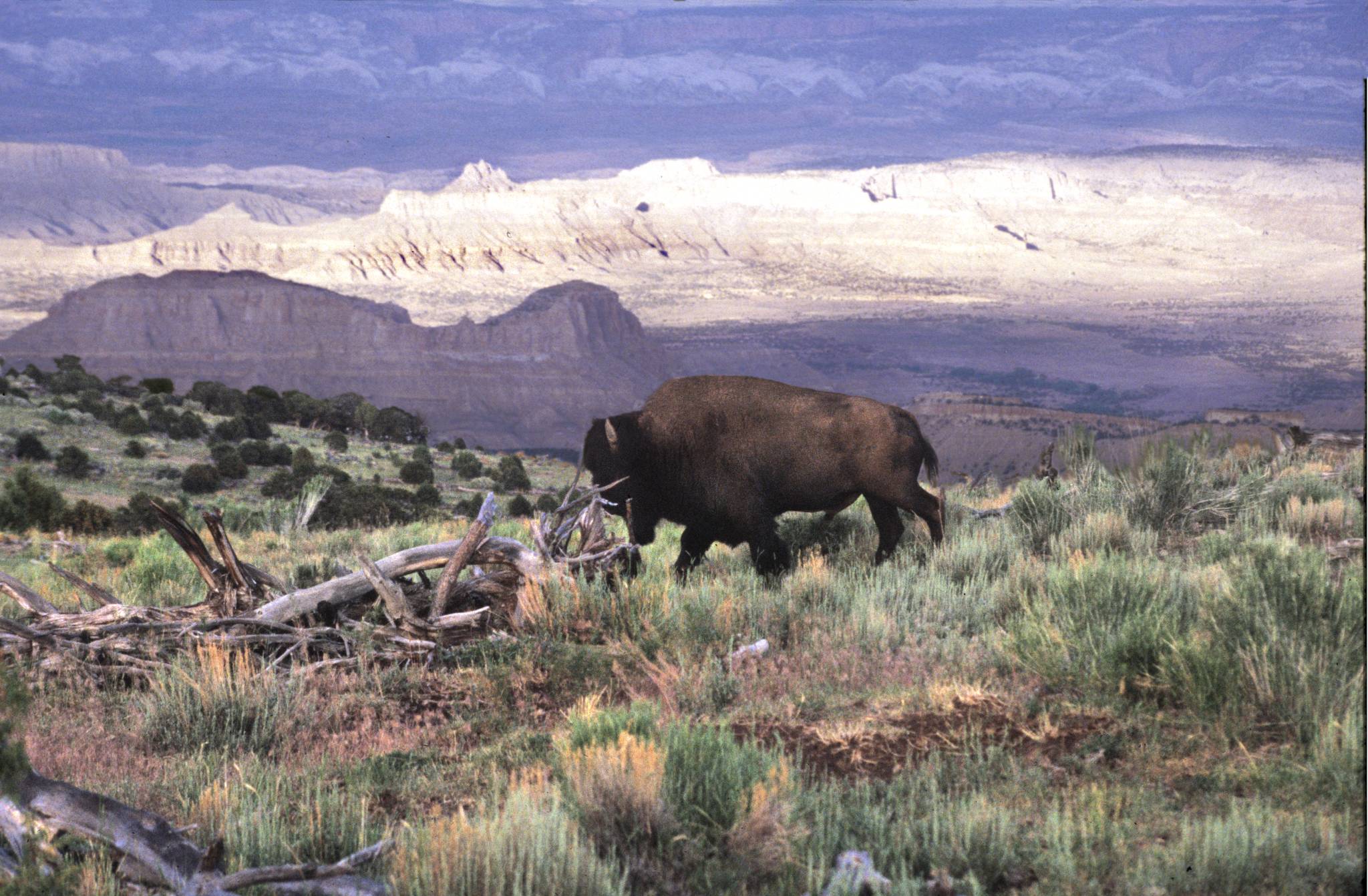DWR News Release
SALT LAKE CITY — With summer in full swing, many Utahns are heading outdoors for recreation. While you are hiking or camping this year, particularly on Antelope Island, there are some important safety tips you should keep in mind if you encounter a bison.
Antelope Island State Park is a popular recreational destination for outdoor enthusiasts who enjoy hiking, camping, birdwatching and boating on the Great Salt Lake. The island is also home to many wildlife species, including mule deer, bighorn sheep, pronghorn and bison.
Antelope Island is where you’ll find one of the nation’s largest and oldest public bison herds. Due to the large population of bison living on the island, it is quite common to see one of the animals. In the winter months, there are about 500-550 bison on the island. After the female bison have their calves in the spring, it brings the total to over 700 animals. Bison can also be found in the Henry Mountains in southern Utah and in the Book Cliffs in eastern Utah.
During the last few years, there have been several instances when visitors to Antelope Island were charged and injured by bison. While these incidents are quite rare, people should still be aware of what to do if they encounter a bison.
“Any time there is a dangerous interaction with wildlife, it’s usually because the person got too close,” Antelope Island State Park Manager Wendy Wilson said. “People often try to get closer for pictures, and it never ends well. Please give these animals plenty of space.”
“There is a common misconception that because big game animals like bison and moose aren’t predators that they aren’t dangerous,” Utah Division of Wildlife Resources Once-in-a-lifetime Species Coordinator Rusty Robinson said. “In reality, both of these species can be quite aggressive if you get too close.”
Here are a few tips for how to avoid making a bison aggressive if you encounter one:
- If you see a bison and it stops what it is doing and starts paying attention to you, you are too close and should slowly back away.
- If a bison is in the middle of the road, wait for it to pass. Do not get out of your vehicle.
- If a bison is on the side of the road, feel free to slowly drive past it. But again, stay inside your vehicle.
- If you see a bison in the distance, do not walk across the rangeland to get closer to it. Take your photos from a safe distance.
- If you are hiking and a bison is close to you or on the trail, you should either back away and return the way you came, or leave the trail and give the animal a very wide berth when passing it. It is OK to go off the trail if your safety is at risk.
“We’ve got trail restrictions on Antelope Island in the backcountry, but safety trumps those rules,” Wilson said. “If you are in the backcountry hiking and you come across any wildlife that’s in your path, we urge you to travel around it. Whatever distance you think you should remain from the animal, double it — that’s how far back you should stay.”
For more specifics on how to prevent conflicts with bison, visit the Wild Aware Utah website.

